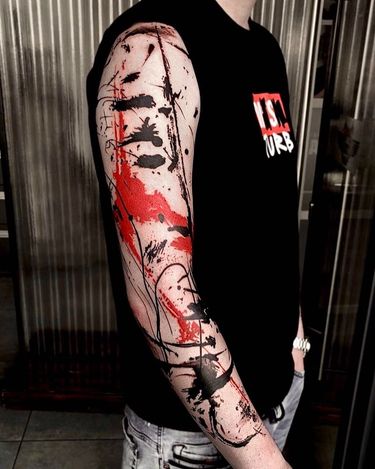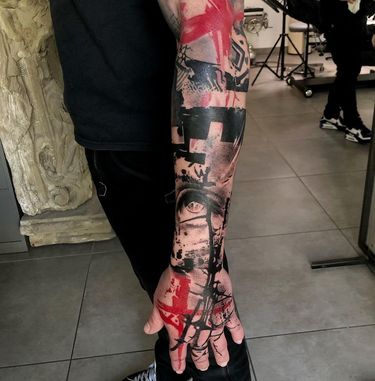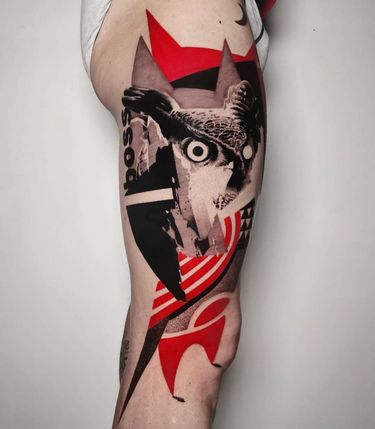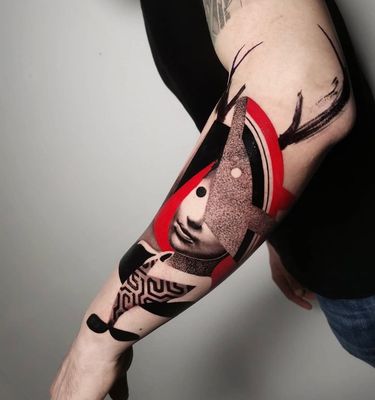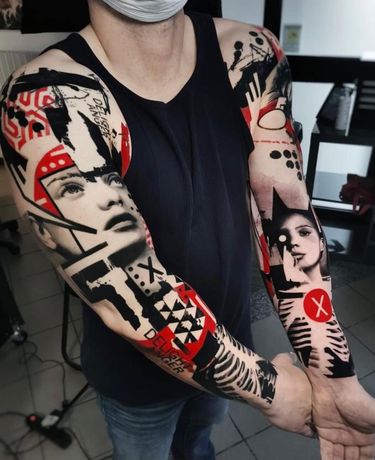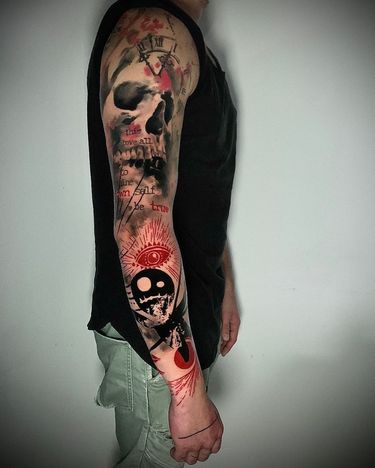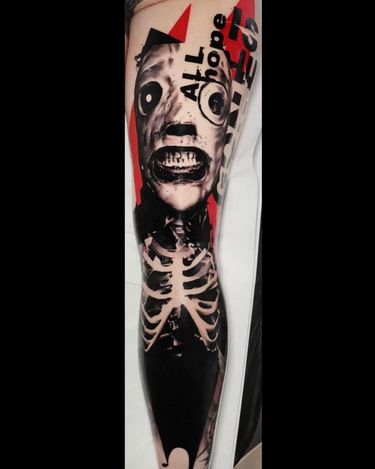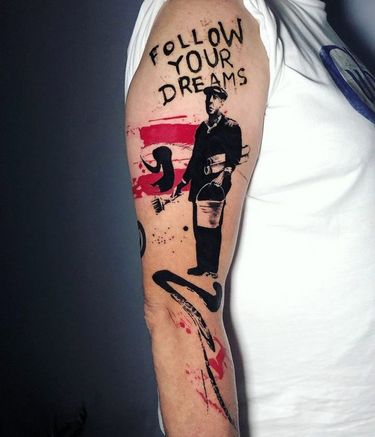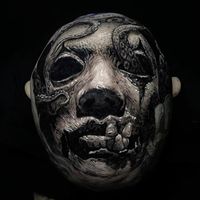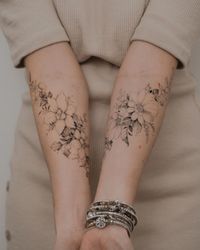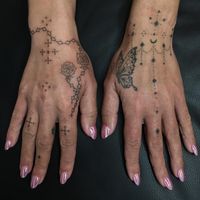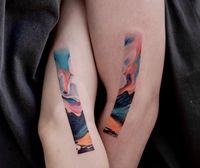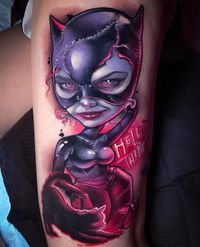
Style Guide: Trash Polka
Discover the bold, Eastern European tattoo style known as Trash Polka, a chaotic collage of abstract and realistic elements in black and red ink.
- Trash Polka is a newer style of tattooing with an Eastern European bent, first appearing in the last two decades or so.
- The style employs black and red ink with abstract and realistic elements to create a chaotic collage effect.
- The designs incorporate heavy geometric elements, photo-realistic components, and sometimes even lettering to cover large surfaces of the body.
- Trash Polka is said to have been established by German tattoo artists Simone Pfaff and Volker Merschky at their Bavarian shop Buena Vista Tattoo Club in the late 90s.
When people think of tattoo styles, a few are more well-known than others – Traditional, Japanese, Fine Line and Tribal come to mind. But tattooing is a living medium with new styles emerging all the time, such as the relatively modern Ignorant Style and Trash Polka. Haven’t heard of this last one? Let’s dive in.
What is Trash Polka?
Trash Polka is a newer style of tattooing with an Eastern European bent, first appearing in the last two decades or so. It employs black and red ink with abstract and realistic elements to create a chaotic collage effect. The designs incorporate heavy geometric elements, photo-realistic components, and sometimes even words to cover large surfaces of the body and tell a dramatic story.
Trash Polka tattoos can include common motifs, usually illustrated in a realistic style, such as roses, wolves, lions, ships, flowers, and portraiture. When words are incorporated, they’re generally tattooed using a typewriter font to give the effect of a collage or ransom note. Images are tattooed in a photo-realistic style, or using portraiture, juxtaposed with large black and red contrasting areas that typically appear as brush strokes, paint stains, and geometric or abstract shapes.
Generally, these types of tattoos will utilize “dissociative imagery” – or images that seem to not directly relate to each other – to “weaken the apparent meaning behind the imagery in the tattoo, and thus weaken the relationship between the tattoo itself and the person wearing it.”
Where did Trash Polka come from?
Trash Polka is said to have been established by German tattoo artists Simone Pfaff and Volker Merschky at their Bavarian shop Buena Vista Tattoo Club in the late 90s. The artistsdescribe their style as a “combination of realism and trash.” The style was originally called “Realistic Trash Polka” – realistic images, “trash” in the form of graphic lettering, and “polka” in the sense of everything coming together like a musical composition. They eventually dropped “realistic” for fear of placing restrictions on the style.
Trash Polka is meant to evoke brutality, passion, and aggressiveness, bringing together seemingly opposite elements to create a united final image. If you think this is the style for you, there’s a few factors to consider. For one, a Trash Polka tattoo calls for a large canvas because of the small details that define the style, like typewriter font. You’ll want to consider an arm or leg sleeve, or perhaps dedicate a part of your torso to the tattoo. Furthermore, because this style doesn’t rely on bold black outlines the way others do, you’ll want to take even more special care to protect the tattoo from the sun to prevent blurring or fading as long as possible.
As they say, you learn something new everyday, and now you’re in the know about Trash Polka tattoos.
Article by: Mandy Brownholtz
